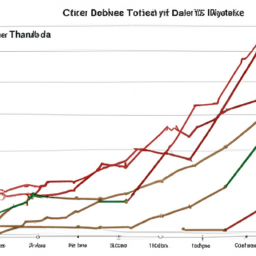Collective investment trusts (CITs) are on track to overtake mutual funds as the most popular target-date vehicle in the coming years. CITs have become increasingly attractive investments due to their low expense compared to mutual fund target-date funds (TDFs). Moreover, the executives of some 403(b) plans have been thwarted by Congress' failure to let them offer CITs, and are now offering CIT-like investments as a result.
The annual Sway Research report found that CITs have seen the most growth in net inflows of funds compared to mutual fund TDFs. This growth is due to their lower expense compared to mutual fund TDFs. This is particularly attractive to investors who are looking for long-term portfolios that can be managed without incurring heavy costs.
The report also found that CITs are increasingly being used for retirement savings, as savers explore liquid alternatives, CITs and individual retirement accounts (IRAs). In addition, CITs provide savers with the opportunity to invest in a range of products, including third-party ETF model strategies, and funds held in the portfolio.
However, the report also noted that CITs are not without risk. CITs are subject to market risk, liquidity risk, and other investment risk, which can affect their performance. In addition, CITs may not provide the same level of protection as mutual funds and other types of investments. As a result, it is important for investors to research CITs and understand their risk before investing.
Furthermore, the report found that CITs have become increasingly popular with institutional investors, such as pension funds and endowments. This is due to the fact that CITs can provide access to investments that may not be available through other investment vehicles. For example, the Polar Capital Emerging Market ex-China Stars Fund invests in collective investment schemes with investment policies that are consistent with its long-term objectives.
Overall, the report concluded that CITs are becoming increasingly popular with a wide range of investors, and are likely to overtake mutual funds as the most popular target-date vehicle in the coming years. This is due to their low expense compared to mutual fund TDFs, as well as the potential for diversification and access to investments that may not be available through other investment vehicles.
